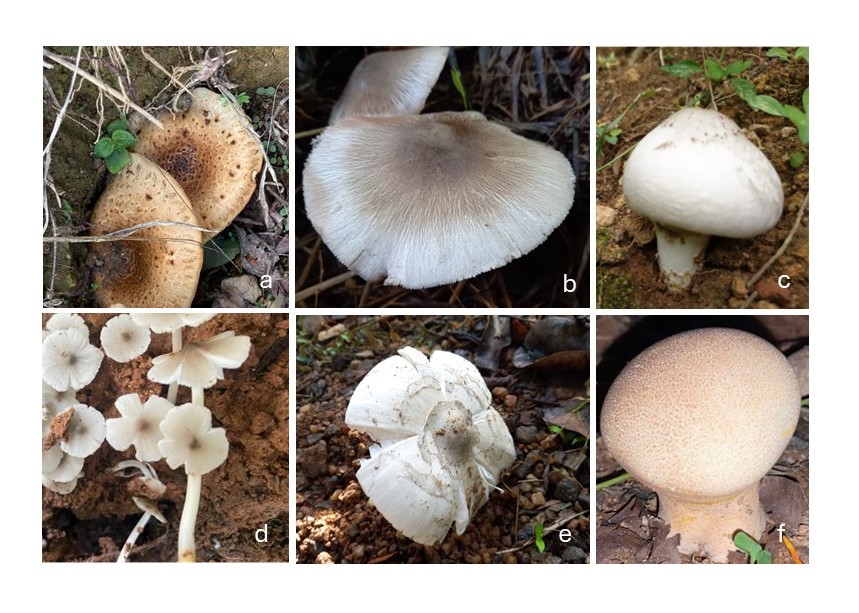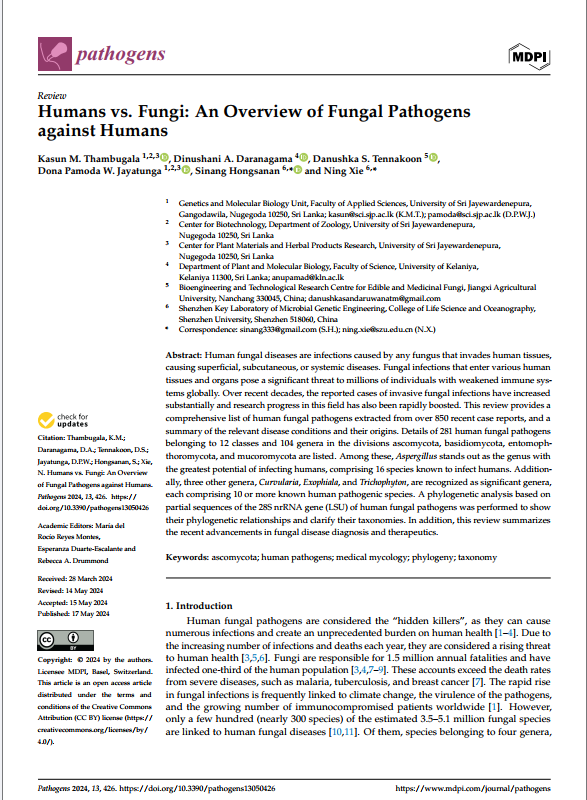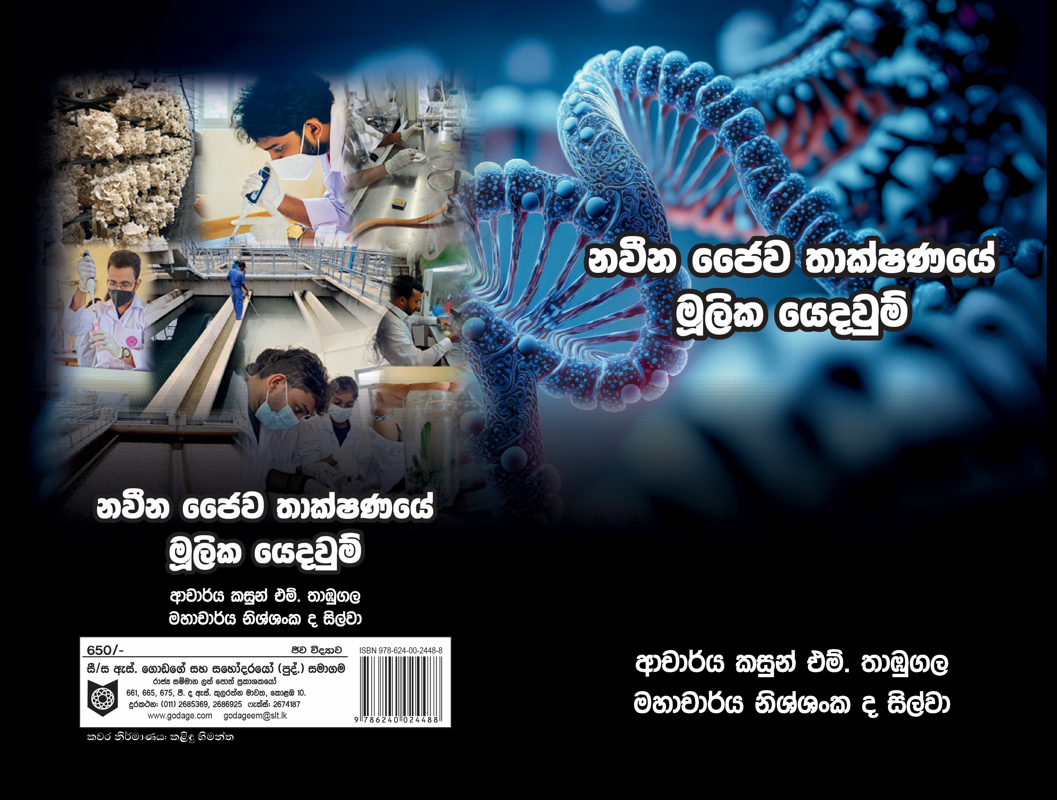In this study, six edible mushrooms, Calvatia candida, Pleurotus giganteus, Schizophyllum radiatum, Termitomyces heimii, T. microcarpus, and Volvariella volvacea were identified based on morphology and phylogeny. Calvatia candida and S. radiatum are reported as new records for Sri Lanka, while this is the first study conducted on molecular characterization of V. volvacea in Sri Lanka. This study aimed to increase the research interest, cultivation, commercialization, and conservation of these identified edible mushrooms in Sri Lanka.
Human fungal diseases are infections caused by any fungus that invades human tissues, causing superficial, subcutaneous, or systemic diseases. Fungal infections that enter various human tissues and organs pose a significant threat to millions of individuals with weakened immune systems globally. Over recent decades, the reported cases of invasive fungal infections have increased substantially and research progress in this field has also been rapidly boosted. This review provides a comprehensive list of human fungal pathogens extracted from over 850 recent case reports, and a summary of the relevant disease conditions and their origins. Details of 281 human fungal pathogens belonging to 12 classes and 104 genera in the divisions ascomycota, basidiomycota, entomophthoromycota, and mucoromycota are listed. Among these, Aspergillus stands out as the genus with the greatest potential of infecting humans, comprising 16 species known to infect humans. Additionally, three other genera, Curvularia, Exophiala, and Trichophyton, are recognized as significant genera, each comprising 10 or more known human pathogenic species. A phylogenetic analysis based on partial sequences of the 28S nrRNA gene (LSU) of human fungal pathogens was performed to show their phylogenetic relationships and clarify their taxonomies. In addition, this review summarizes the recent advancements in fungal disease diagnosis and therapeutics.
The new book publication of Dr. Kasun M. Thambugala and Senior Prof. B. G. D. Nissanka K. de Silva titled ” ජෛව තාක්ෂණයේ මූලික යෙදවුම් ” was launched recently.
The first unit alumni get-together -2024 held at the Buttercup Restaurant, Maharagama.





